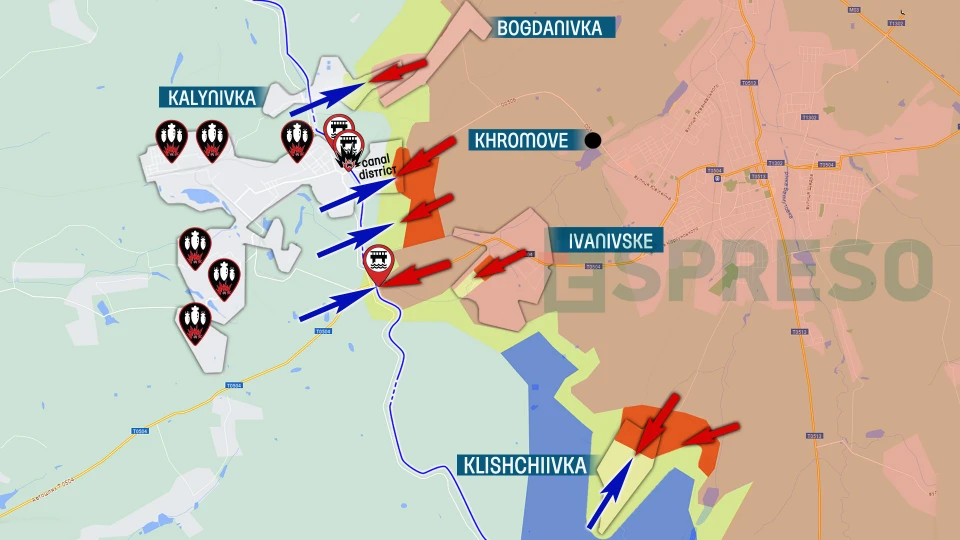
On unique cases of Russian military targets’ destruction: Serhiy Zgurets’ column
The use of American ATACMS missiles and Ukrainian drones by the Defense Forces of Ukraine is becoming more effective
Ukrainian drones and ATACMS hit Russian targets
The use of American ATACMS missiles and our drones by the Defense Forces of Ukraine is becoming increasingly effective. Over the weekend and on June 10, we saw several first-time events. The General Staff of the Armed Forces of Ukraine reported yesterday that our military struck the positions of three divisions of Russian anti-aircraft missile systems in occupied Crimea with missile weapons. One latest S-400 in Dzhankoy and two air defense systems near Chornomorske and Yevpatoria. Three divisions hit at once – this is the first such result from ATACMS action.
On June 9, for the first time during the full-scale war, Ukrainian drones attacked targets in the Sea of Azov. Russian vessels near the port of Taganrog were hit.
Another unique case was on June 8, when Ukrainian drones attacked the Akhtubinsk airfield 600 km away, destroying a new Russian Su-57 aircraft. This marks the first time in history that a fifth-generation fighter has fallen victim to drones. Before this attack, the Russian Air Force had only six such aircraft in combat. Now there is one less. So, the target reconnaissance and means of attack by the Defense Forces are working very well.
Frontline situation
Let's discuss what's happening near Chasiv Yar. Yesterday, the Russian army posted a video claiming their advance in the city's eastern part, a neighborhood called Kanal. However, today, the city is entirely controlled by the Ukrainian Defense Forces, according to the spokesman for the Khortytsia group of forces.
Andriy Babychev from the 93rd Separate Mechanized Brigade mentioned his brigade covers the area from Kurdyumivka to Klishchiivka, with units specifically assisting in Chasiv Yar. There have been no changes in Kurdyumivka and Andriivka over the past week. The enemy isn't advancing there, but constant attacks persist, especially around Klishchiivka.

About 50% of Klishchiivka is still under enemy control. We're working to push the Russians out of the eastern side of Klishchiivka, where they keep sending reinforcements. The Ukrainian Defense Forces have had some successful counterattacks, leading to ongoing back-and-forth fighting in the Klishchiivka area. The invaders use a variety of weapons, and last night, there was a significant influx of enemy artillery in Klishchiivka and Ivanivske. The Russians are putting pressure on Chasiv Yar. Currently, Kalynivka is free of enemies, but positional battles continue, with the enemy coming and going.
The serviceman noted that the enemy did not advance in Ivanivske but did advance in the Novyi district. There are also talks about the Canal district because it’s located across the Siverskyi Donets - Donbas canal. The Russians had a small passage across the Canal from the south and tried to gain a foothold in the first houses. However, they haven’t succeeded for more than a week, although they had a passage there. But in the Novyi area, the enemy has made some progress.
Babychev mentioned that for several days, the Russians burned everything around using Solntsepek. Recently, four Solntsepeks arrived simultaneously and started shelling. Everything is burning, making it very difficult to defend. The Russians use scorched earth tactics, burning everything down. If they destroy everything with Solntsepek, they can just put their flag on the ruins. That’s the Russians' idea of victory.
Babychev said the enemy constantly uses guided aerial bombs, mostly targeting Chasiv Yar, and sometimes Kostyantynivka, Druzhkivka, and Kramatorsk. About two weeks ago, the enemy began heavily using Uragans, with entire divisions launching all their cassettes. The big problem is the enemy’s use of kamikaze drones to drop explosives, as there aren’t enough electronic warfare systems to jam them. The Russians also use Uragans for remote mining, attaching cluster shells with petals to Mavic drones and dropping them. These cluster shells scatter petals while flying, causing remote and local mining. This is how the Russians fight.
A fighter from the 93rd Brigade emphasized that the brigade is being replenished with new soldiers. Constant training of various units continues, and the recruitment campaign is working well. Our instructors are diligent because they know that poor training means more casualties, which we want to avoid. We focus on keeping our staff and training them to be professional.
Lyman direction
Next, let's talk about the Lyman direction, which gets less media attention but is still tough. Here, there are attacks on both Terny and Torske, with constant battles near Bilohorivka and in Serebrianka Forestry. These enemy attempts lead to heavy losses for them, but our Defense Forces also face extreme challenges in these areas.
Rostyslav, call sign Rost, a serviceman of the 97th battalion of the 60th Brigade, noted that his comrades are in the direction of the enemy's main attack, in the hottest spots. However, Ukrainian defenders are holding all positions and inflicting significant losses on the enemy. Russian soldiers have stopped using armored vehicles in this direction because the fighters of the 60th brigade destroy them even before they reach the Defense Forces' positions.
The invaders use small group tactics, lots of FPV drones, and dropping explosives. Currently, the Russian occupiers are adding nerve gas and other harmful gasses to their arsenal. Ukrainian fighters are prepared for such tactics and have proper protection in all positions.
The serviceman said that his brigade's tactic is to use all elements of their arsenal effectively: FPV drones, explosive droppings, Mavics, mortars, artillery, and robotic systems must all be used together for maximum impact. Ground unmanned platforms supply food and ammo, while combat modules carry out tasks.
Regarding fortification, Rost said it's a painful issue. Fighters know they must dig continuously to save their lives. On the front line, where the enemy is just 100-150 meters away, it's hard to build serious defenses. Fighters dig deep, aiming to be 2-3 meters underground to survive hits from guided aerial bombs.
The fighter added that they know the enemy well; they haven't changed. These are regular Russian armed forces and special forces, well-trained and equipped, mixed with recruits mobilized just a month ago. The enemy uses new recruits as cannon fodder, followed by more trained, recently recruited personnel. As for Africans in the enemy ranks, there were Moroccans, but they are no longer present.
- News












































